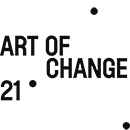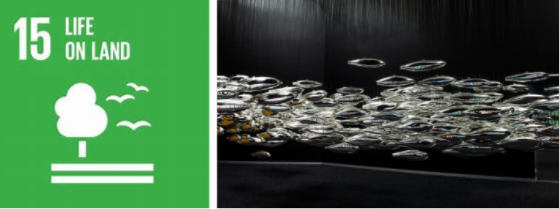Designed and led by the glass artist, naturalist and environmentalist Joseph Rossano, from Washington State (USA), “Salmon School” is a project of wild salmon conservation as well as an artistic initiative. The project focuses on the issue of climate change and the effects of warming waterways, and it has three objectives: restoring waterways, educating communities, and measuring the wild salmon population. Wild salmon serve as the keystone species driving ecosystem function across hundreds of millions of hectares of forests and wetlands in Asia, Europe, North America, and the Arctic. These salmon watersheds are hugely important in the drive for a low-carbon future. Accelerating the locally-led protection and restoration of these rivers can mitigate climate change and boost salmon runs that are so important to communities on the ground.
The project started after Rossano noticed a dramatic decline in the local salmon population in the Skagit River, the fourth largest outflow of water from the United States into the Pacific Ocean (over the past 30 years totaling 80% of the salmon stock). His goal is “to motivate communities to tackle the issues facing salmon populations and therefore address climate change. It is extremely important to protect these waterways, as they are the habitat for salmon and other animals”. Salmon School brings together scientists, artists, politicians, advocates, Indigenous peoples, NGOs, and communities, to involve them in waterways restoration campaigns.
It has created an environmental salmon DNA map in the USA with the help of Salmon Nation, Atlantic Salmon Federation, Wild Salmon Center, and the Smithsonian Institution. Important to the process, the eDNA database shows the long term effects of climate change on the salmon population. Furthermore, the project educates communities and students in Washington State, USA through the participation of scientists, biologists, environmentalists, and the Clyde River Foundation (already 26 primary schools in the USA). As an example, Salmon School restored waterways and removed fish barriers, giving salmon an additional 150 miles of access to their ancestral waterways in Washington State. Continued efforts to restore waterways, educate communities, and collect eDNA continue across the world as the project has expanded into France, Iceland, Ireland, UK, Norway, Australia, Japan, and other locations across the USA.
On the artistic side, Rossano gathered about 120 artists from all over the world to create a huge installation, with 300 glass shaped salmon replicating a school of salmon. The installation is a glass, eco-designed salmon school using both recycled and batched-glass—the project offsets its carbon footprint from production by planting trees along the Tweed River, England. Last November, it stopped in Glasgow for COP26 within the Blue Zone, after a journey to the Museum of Glass (Tacoma, USA), The Australian National Museum (Canberra), Osaka University of Art (Japan)…
Much like the reflective glass being displayed by the Salmon School project, it is a symbolic sign that reflects the issue upon its viewers and reflects the real world changes needed to be made in order to save wild salmon populations and these ecosystems.
Link to Website: The Salmon School
December 2021
Wesley Colvin
Credit: Ben Etridge Photography curtsey of the artist Joseph Rossano 2021
Find all the articles from Impact Art News n°35 – November/December 2021
To subscribe to Impact Art News (free) : here

